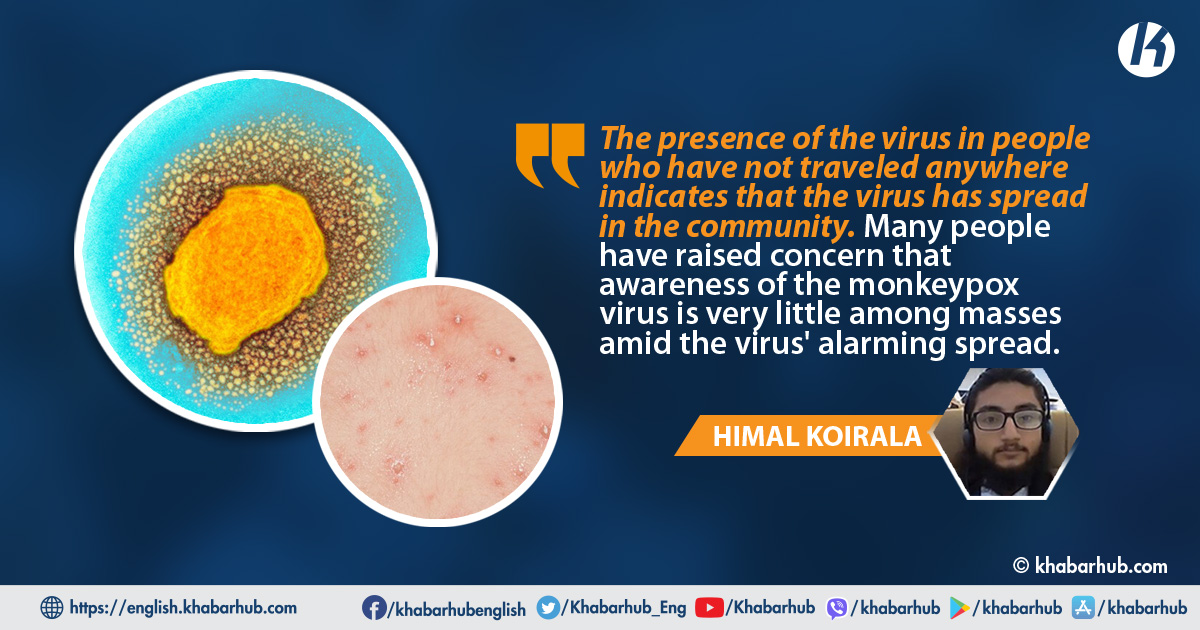0%

KATHMANDU: The North African nation of Morocco recently confirmed the detection of monkeypox virus in its citizens last month.
Since then, the number of countries confirmed to have diagnosed the monkeypox infection has exceeded 30.
In addition to Morocco, the United Kingdom, the United States, Canada, Australia, the Netherlands, Sweden, Spain, France, Germany and Italy have reported cases of monkeypox virus.
In the UK alone, around 200 people have been infected with the virus.
Since 13 May 2022, cases of monkeypox have been reported to World Health Organization (WHO) from 12 Member States that are not endemic for monkeypox virus, across three WHO regions.
Epidemiological investigations are ongoing, however, reported cases thus far have no established travel links to endemic areas, said WHO.
Based on currently available information with WHO, cases have mainly but not exclusively been identified amongst men who have sex with men (MSM) seeking care in primary care and sexual health clinics.
It has been said that the impact of the recent outbreaks appears to normal, posing a low risk to the general population.
Experts say that although these are species of viruses like measles and mumps, the risk of infection is low.
The monkeypox virus is most common in Central and West Africa. The monkeypox virus type that is spreading around the world is said to be common in West Africa.
According to the British Broadcasting Corporation (BBC), the presence of the virus in people who have not traveled anywhere indicates that the virus has spread in the community.
Many people have raised concern that awareness of the monkeypox virus is very little among masses amid the virus’ alarming spread.
Monkeypox begins with fever, headache, muscle aches, and exhaustion.
The incubation period (time from infection to symptoms) for monkeypox is usually 7−14 days but can range from 5−21 days, according to Center for Diseases Control and Prevention (CDC).
The illness begins with fever, headache, muscle aches, backache, swollen lymph nodes, chills and exhaustion.
Within 1 to 3 days (sometimes longer) after the appearance of fever, the patient develops a rash, often beginning on the face then spreading to other parts of the body.
Lesions progress through the following stages before falling off: macules, papules, vesicles, pustules and scabs, as per CDC.
The illness typically lasts for 2−4 weeks. In Africa, monkeypox has been shown to cause death in as many as 1 in 10 persons who contract the disease.
There are number of measures that can be taken to prevent infection with monkeypox virus:
Experts say a bigger scale outbreak of monkeypox like that of the coronavirus is unlikely.
Jonathan Ball, a professor of molecular virology at the University of Nottingham, rules out such scenario. He said, “Initially, only one in 50 people got infected with monkeypox virus. This confirms how weak the virus is.”